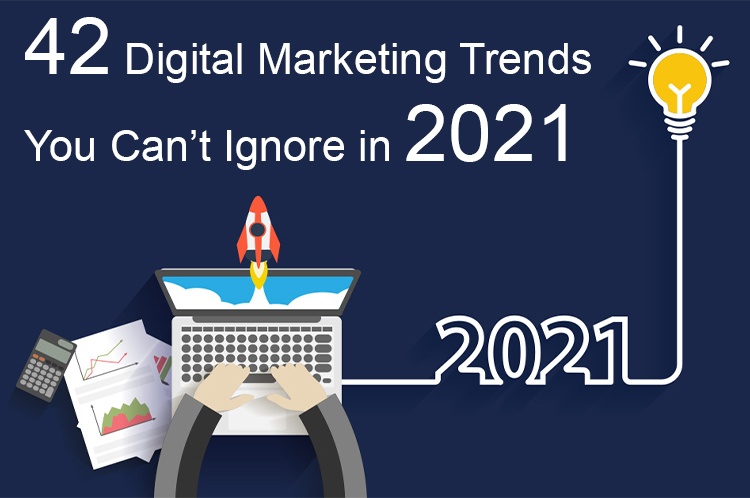Artificial intelligence, data-driven marketing, and voice search engine optimization (VSEO) were formerly considered far-fetched concepts. These cutting-edge digital marketing trends strategies are now among most business owners top goals for 2021. (Let’s learn advance digital marketing course with Best digital marketing institute in Delhi)
What’s to say they aren’t? After all, if your company wants to be competitive in today’s online environment, it needs to adapt to the fast-changing digital marketing landscape. Brian Solis
puts it like way:
Digital Darwinism, the evolution of customer behaviour when society and technology evolve faster than the ability to exploit it, affects every organisation. Digital Darwinism makes no distinctions. Every company is in danger. Make no mistake: We live in a time when technology marketing evolves at a breakneck pace, and customer preferences and habits are difficult to forecast. Marketers can no longer bury their heads in the sand and expect that informed estimates and tried-and-true techniques would continue to work indefinitely.
TABLE OF CONTENTS:
Continue reading to learn about 42 digital marketing trends that will help your company not
just survive, but prosper in this age of change.
1) AI-Powered Optimization
Gartner experts anticipated just a few years ago that AI technology would be ubiquitous in practically every new software product and service by 2020. In fact, Techgrabyte reports:
In the next few decades, artificial intelligence will be the biggest economic opportunity for enterprises, sectors, and nations, according to the report, which means that & AI latecomers will find themselves at a major competitive disadvantage within the next few years.
Here are the main reasons why businesses are incorporating AI into their operations
● We can use AI to gain or keep a competitive advantage.
● We will be able to branch out into new businesses thanks to AI.
● New AI-based businesses will enter our market.
● AI will be used by incumbent competitors.
● We will be forced to use AI in order to save money.
● AI-driven products and services will be offered by suppliers.
● Customers will want AI services.
To help businesses understand how customers find their products and services, AI can evaluate consumer behaviour and search patterns, as well as user data from social media platforms and blog postings.
Chatbots are an amazing example of AI in action (more on that later). To automate payment processing, Mastercard designed a Facebook messenger bot that employs natural language processing algorithms to comprehend what the consumer wants and answer as if it were a real person:
Many businesses, including content generation, are increasingly relying on artificial intelligence.
Content optimization is required if you want to rank your content in competitive niches. In SEO, the term content optimization refers to things like:
● Using the right density of major and secondary keywords
● Having a suitable word count and ensuring excellent readability
● Having the best meta title and description tags possible, and, most importantly,
nailing the search intent.
Google knows what consumers are looking for and what type of material will best meet their needs. When you search for fish oil, for example, Google recognises that the most common search purpose is to learn about the health advantages and side effects:
As a result, ranking #1 for this keyword with an e-commerce product page is quite unlikely. If you get this step incorrect, all of your content creation, promotion, and link-building efforts will go for nought.
Using a content optimization tool like ClickFlow is the simplest method to incorporate content optimization into your SEO and content operations. The Content Editor function in ClickFlow pulls data from the top 20 current ranking pages and assists your writing staff in creating an optimised piece of content. digital marketing trends
Artificial Intelligence (AI) to serve up subtopics and associated keywords would make any article ultra-comprehensive and increase its chances of ranking on page one. It provides you with a suggested word count, readability feedback, and an overall optimization score based on the keywords and subtopics covered:
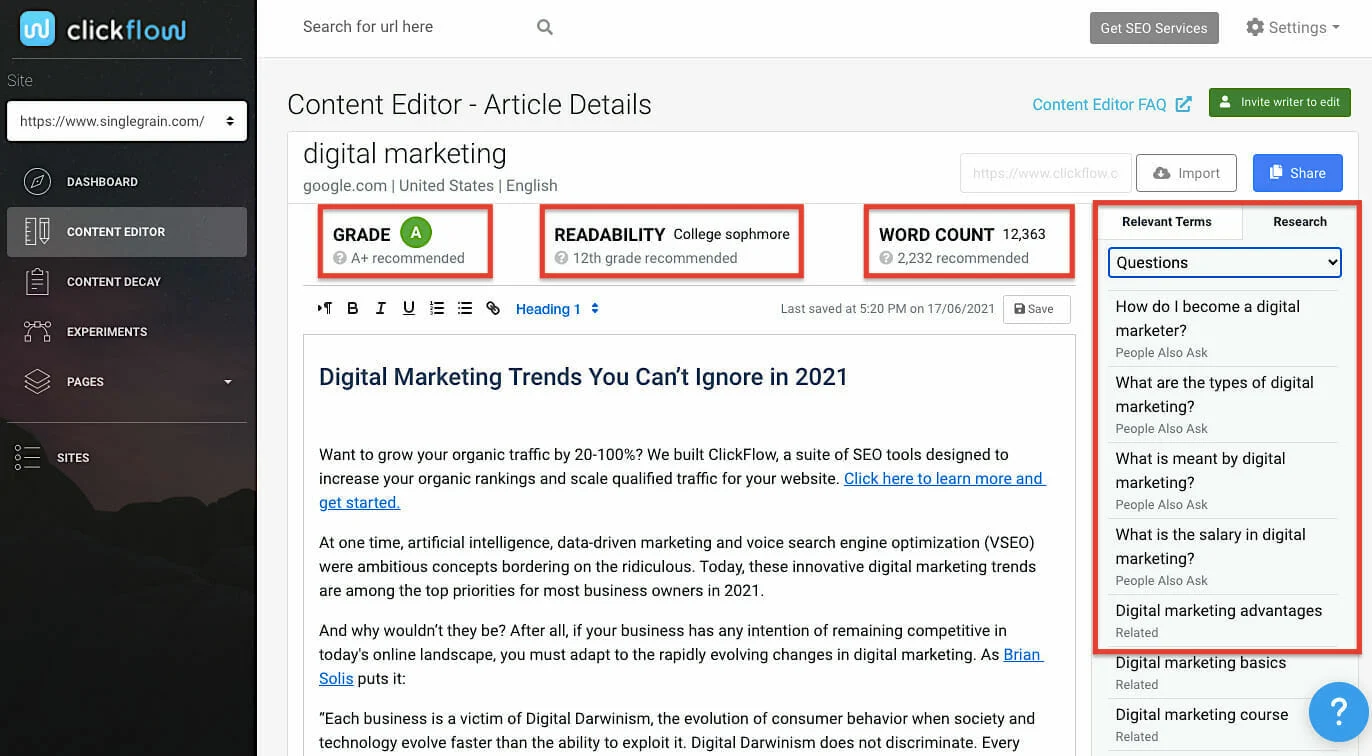
This was one of the most important methods employed in this case study, which saw ElectricityRates.com grow organic clicks by 327 percent in just 30 days. Using the Text Editor, they were able to determine that their previous content was insufficiently detailed and that critical keywords were missing.
Businesses adopting AI in 2021 will be able to cut staffing costs and accelerate growth, getting an edge over their competitors.
2) Programmatic Advertising
Programmatic advertising refers to the use of artificial intelligence (AI) to automate ad buying
in order to target more particular audiences. For example, real-time bidding is a sort of programmatic ad buying. This automation is far more efficient and quick, resulting in increased conversions and cheaper customer acquisition costs.
It’s transforming the face of digital advertising so quickly that 86.2 percent of digital display ads in the United States will be programmatic by 2020, according to eMarketer.
According to SmartyAds Irina Kovalenko:
Most manual search-driven advertising campaigns (even those using professional tools) consider three or four factors: the keyword, the time of day, and the location. When combined with customer data platforms, solutions like programmatic demand-side platforms can employ hundreds of targeting signals to personalise the advertisement and even target based on lifestyle or behaviour habits.
Here’s a quick look at how programmatic advertising works:
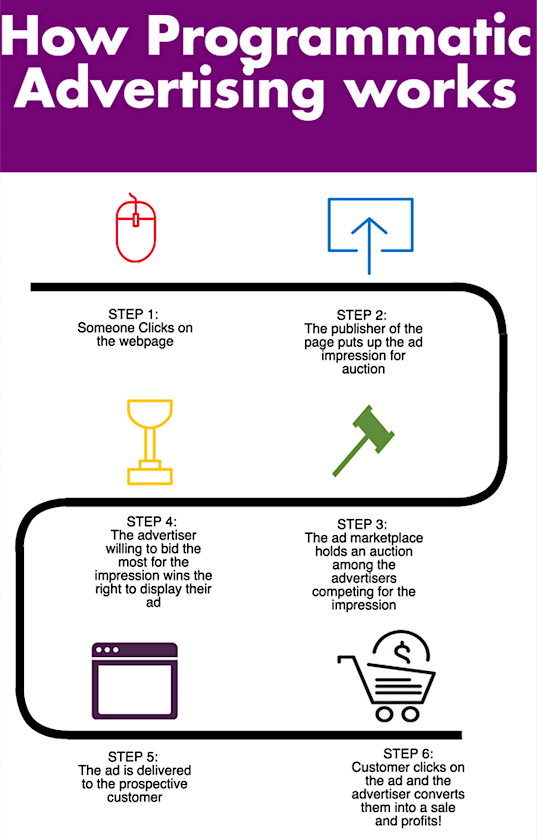
3) Chatbots
In 2021, chatbots will remain a significant aspect of digital marketing. This AI-based solution employs instant messaging to speak with your customers or site visitors in real-time, day or night. 42 Digital Marketing Trends
According to surveys:
By 2020, chatbots will power 85 percent of customer support. Chatbots top perks include 24-hour service (64 percent), rapid responses to inquiries (55 percent), and straightforward question answers (55 percent )

Many customers enjoy engaging with chatbots since they are available 24 hours a day, respond quickly, retain your whole purchase history properly, and never lose patience. By matching clients expectations and automating monotonous chores, these virtual assistants provide excellent customer service, allowing you to focus on more important responsibilities.
Chatbot technology is already being used by a number of companies, including Lyft, a ride- sharing service. Lyft lets you order a trip by chat (Facebook Messenger and Slack) or voice (Amazon Echo), and its chatbot will tell you where your driver is right now:
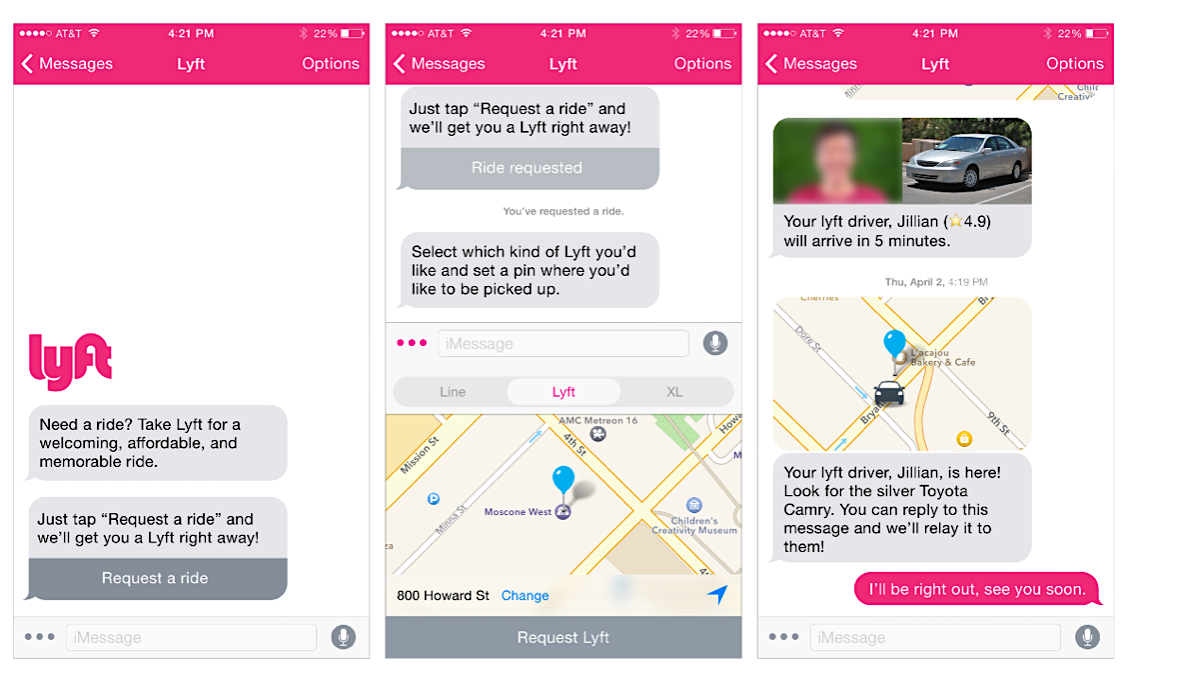
Passengers may use the app to select the sort of transport they want, make a request, track the car’s location, email friends an estimated arrival time, and pay for it.
Whole Foods Market, Fandango, Sephora, Staples, The Wall Street Journal, and Pizza Hut are among the companies that have successfully implemented chatbot technology.
4) Conversational Marketing
With all of the chatbot rhetoric, the truth of current marketing emerges: it’s more conversational. People want it that way, therefore brands are catering to them. When customers have a question, 82 percent want an answer.
Conversational marketing allows marketers and customers to communicate one-on-one in real-time:

Unlike traditional marketing methods, this type of marketing is now available across many channels, allowing firms to reach customers on their own terms: on the devices, platforms, and timeframes that are most convenient for them.
With Recur Post, post scheduler and automation tool, you can schedule Instagram posts, manage notifications, and monitor your performance. RecurPost analyses your post engagement and recommends the optimum time to post content on your Instagram account, resulting in greater interaction and post-performance. (Join digital marketing institute in Noida for the practical learning experience)
As per David Cancel, founder and CEO of Drift:
“Today’s buyers expect to find what they’re looking for now, not later. As we prepare for the future, it will be more important than ever for businesses to be available across a broad spectrum of channels, and to make sure you’re communicating the way people prefer to communicate.”
Finally, the major purpose of conversational marketing is to improve the user experience by using a feedback-driven paradigm that encourages greater engagement and loyalty.
5) Personalization
Personalize your marketing in 2021 if you want to stand out – that means tailored content, products, emails, and more.
Consider the following statistics on personalization:
● Consumers are enraged by the generic advertising blitz, with 63% expressing their
dissatisfaction.
● A whopping 80% of people think they are more likely to conduct business with a firm
that provides individualised experiences.
● Personalization appeals to 90% of respondents.
Personalized, triggered emails based on activity are 3x better than batch-and-blast emails claims Kevin George of EmailMonks. Netflix and Amazon, with their personalised recommended products or movie titles, are impossible to overlook when looking for instances of the power of personalisation.
There are a few such companies that are employing customization well today:
● EasyJet has launched a data-driven email campaign that builds tailored tales based on customers travel experience with the airline and then suggests where they might like to fly next. About 12.5 million unique emails were sent, with a click-through rate of 25% higher than non-personalized emails.
● Cadbury developed a customised video campaign that matches viewers with a Dairy Milk flavour based on information from their Facebook profile, such as age, interest, and geography. The campaign had a click-through rate of 65 percent and a conversion rate of 33.6 percent, demonstrating that personalization works.
● Starbucks employs a gamified mobile app that analyses data like purchase history and location to get as personal as possible, allows users to customise their drinks, and encourages continued use with its rewards system – resulting in a $2.56 billion sales increase.
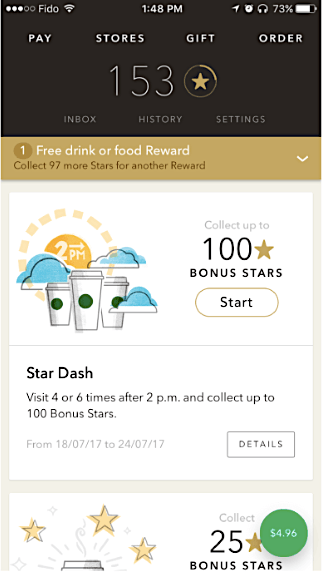
6) Video Marketing
Video marketing is one of the most important marketing trends today, if not the most essential, and will continue to be so for the next 5-10 years. In 2021, these figures demonstrate the necessity of including video in your digital marketing strategy:
● 70% of customers say they’ve shared a brand’s video on social media.
● Video has enhanced the conversion rate of 72 percent of firms.
● Consumers agree that watching product videos gives them more confidence when making online purchases (52%).
● After watching a video, 65 percent of executives go to the marketer’s website and 39 percent phone a vendor.
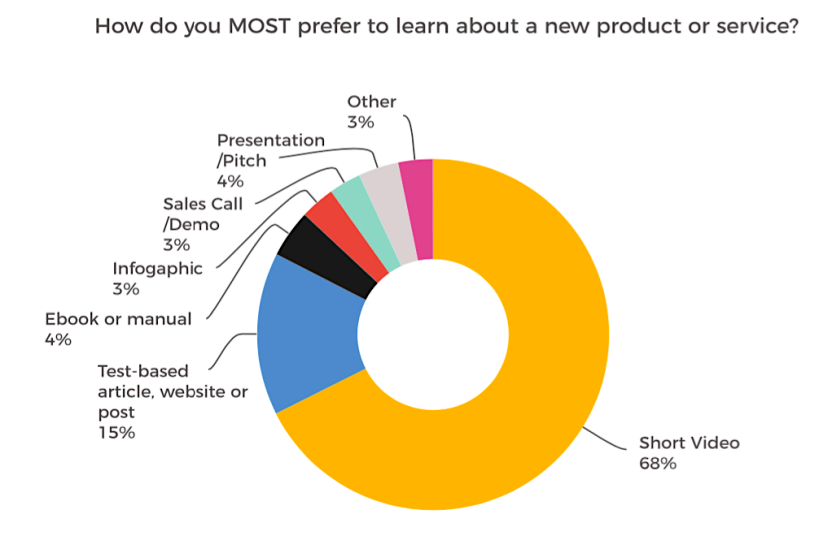
And don’t limit yourself to YouTube. You can produce a video post or start a live broadcast on Facebook, Instagram, or LinkedIn to increase interaction with your video marketing.
The rising move to mobile devices has been one of the difficulties that marketers have encountered in recent years. Long-form sales websites and emails are quickly becoming obsolete due to their inability to be read on small mobile screens. Video, on the other hand, can deliver the same information in a manner that works on any device.
When compared to text, video on your site is 50X more likely (50 times!) to drive organic search results. Why? Google pushes pages with videos higher in the rankings because users find video material more appealing.
One of the best aspects of video marketing is the ease with which you can rearrange your content. Assume you’ve just finished filming a video for your YouTube channel. Instead of simply uploading it to YouTube, you could:
● So that you have a text version of the video, get it transcribed.
● For higher rankings, post the transcription on your blog alongside an embedded YouTube video.
● Upload the raw video to Facebook with the transcription as subtitles (native
Facebook videos get a much higher impression share and engagement than shared YouTube videos)
● With a quick rewrite and the addition of important stats and photos, turn the transcription into a standalone blog entry.
● Take the audio and turn it into a podcast episode.
● Increase open rates by 19% by including video thumbnails in your email marketing campaigns and using the term in subject lines.
Here are some other video marketing trends that are gaining more and more traction:
● Many organisations use live video for interviews, product demonstrations, and behind-the-scenes insights of the brand, such as life in the office, how items are created, company events, and so on.
● Instead of making phone calls or sending emails, businesses and marketers use 1:1 video to produce tailored video messaging. As the cost of living decreases
● Search engine optimization for videos. Because YouTube and other videos appear in the SERPs, video optimization — such as adding text overlays and closed captions in addition to your description, title, and file names – is becoming increasingly crucial.
● 360-degree video material is a type of video that is viewed from all sides. This trend toward a more participatory experience is growing – simply look for the circle sign in the top left corner to start sliding the moving image left or right while it’s playing, as in this 360 video from Hong Kong Airlines.
7) Influencer Marketing
Influencer marketing is a sort of word-of-mouth marketing that focuses on using influential people to spread your business message to a wider audience. Influencers can be well- known celebrities, but they’re more likely to be Instagram or YouTube personalities with a large niche following who can help promote your brand or product through their social media
platforms.
Because influencer marketing is more genuine than traditional marketing:
● Consumers believe influencers product recommendations far more than what brands say about themselves, according to 63 percent of respondents.
● In the last six months, 58 percent of customers purchased a new product based on the advice of an influencer.
● As a result, Iceland, a well-known British supermarket company, has turned from celebrity-driven advertisements to a campaign featuring real-life mothers. It currently works with a variety of vloggers to sell its products in a more genuine manner, thanks to its collaboration with the YouTube community channel Mum.
According to an study, 35 percent of moms trust online videos more than traditional
advertisements.
Influencer marketing isn’t simply a fad: it’s a way of life. According to a mediakix analysis, influencer marketing ad spending might exceed $10 billion by next year:
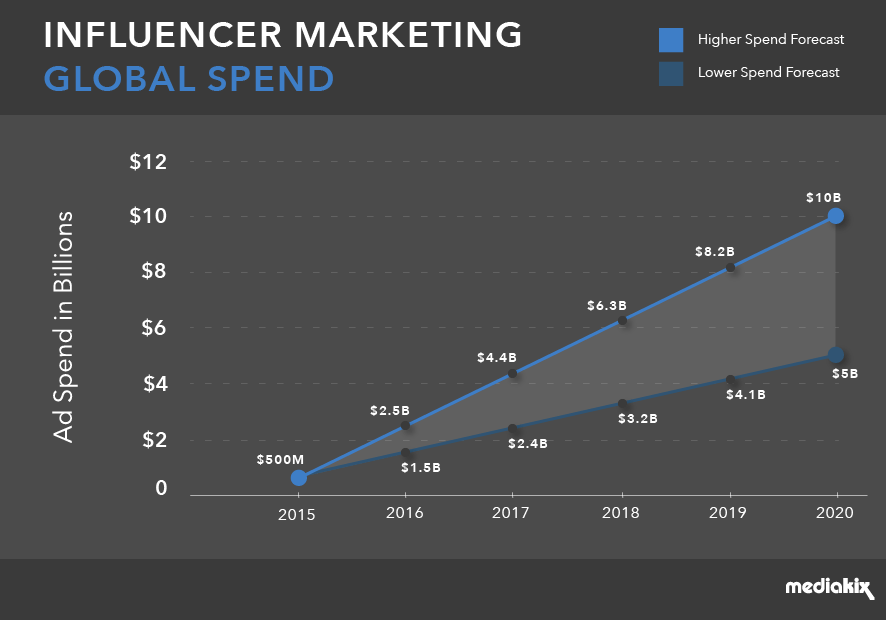
Artificial intelligence will have an impact on influencer marketing as well. With each passing year, artificial intelligence (AI) makes the process of identifying the ideal influencers to collaborate with easier and faster. It’s assisting in the identification of people who have higher engagement, fewer bogus followers, and a better possibility of creating a favourable return on investment (ROI). Artificial intelligence is also changing the way influencer marketing is done in the following ways:
● With ANN, you can recognise images (Artificial Neural Networks)
● Using NLP to assess influencer performance (Natural Language Processing)
● ANN for incentive prediction
● Identifying an influencer’s power
● Posts that do not follow the disclosure requirements are flagged.
● Fake engagements and spambots are no longer an issue.
8) Social Messaging Apps
If you think social messaging apps are just for sending emojis to your friends, take a look at
these numbers:
● Facebook Messenger has 1.3 billion monthly active users.
● Every month, 10 billion messages are sent between people and businesses via
Facebook Messenger, which has 1.6 billion active users and sends 55 billion messages every day.
● WhatsApp, Facebook Messenger, and WeChat, the top three social messaging apps, have more users combined than Facebook or YouTube.
● Because individuals are spending more time texting one other on social messaging applications, it makes sense to sell your company’s products and services where your potential customers are hanging out.
Because social messaging applications allow for personalisation and offer value to the user experience, they can be quite beneficial for sending direct messages to customers. People also expect businesses to be present on messaging applications because it is a direct and convenient way to communicate with them. In reality:
Customers are 63% more likely to return to a company’s website if it offers live chat.
The following are some of the reasons why your company should employ messaging apps:
● Contact should be encouraged.
● Provide information
● Increase sales
● People should be involved in events.
● Recover lost customers.
● Provide assistance and support
9) Visual Search
People can submit an image to perform a search and get more particular results with visual search, which can elevate the user experience to a whole new level.
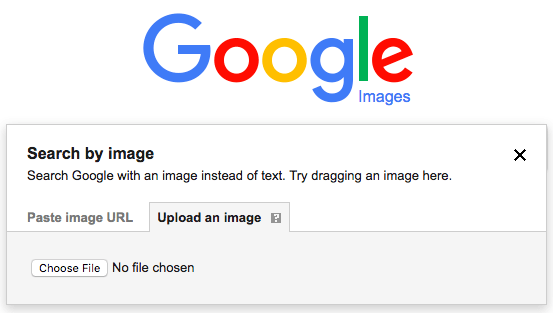
A) Pinterest Lens
Pinterest, predictably, has joined on the visual search bandwagon. They released Lens, a visual search engine that allows users to take a photo of an item and find out where to buy it online, search for comparable things, and explore pinboards of related objects by taking a photo of it.
It turns your phone’s camera into a search bar, according to Marketing Land:
Pinterest’s Lens now detects 2.5 billion home and fashion products, has prompted over 600 million searches on Pinterest’s mobile apps and browser extensions, and has witnessed a 140 percent increase in usage since its beta debut.
Pinterest has worked to improve its features:
● Pincodes are a QR code-like technology that allows you to get inspiration when you’re out shopping or reading your favourite magazines.
● Lens Your Look was created to remove the uncertainty out of outfit planning.
● They collaborated with companies such as Samsung to provide visual search to its
latest devices and Target to allow users to search their catalogue using related products they see in real life.
● They’ve fully automated Shop the Look, a function that allows users to buy things from firms that collaborate with Pinterest, so you can buy a pair of jeans you see in a photo, for example.
● Catalogues, which allows anyone to upload and transform their complete product catalogue into shoppable Pins is one of the new tools they announced to assist businesses sell their products.
Make sure you are optimizing for visual search, because (not surprisingly) the top search categories for Lens are:
● Fashion
● Home decor
● Art
● Food
● Products
● Animals
● Outfits
● Beauty
● Vehicles
● Travel
B) Google Lens
Pinterest isn’t the only site that uses visual search. Google Lens is a visual search engine developed by Google that uses a camera app to recognise items and landmarks. When you take a photo of the following items, you can do the following:
● Find similar products and where to buy them in the apparel and home goods
categories.
● Barcodes: A barcode can be used to find information about a product, such as where
to buy it.
● Save the phone number or address from a business card to contact.
● Get an overview of the book and read reviews.
● Add the event to your calendar using the event flyer or billboard.
● See historical details, hours of operation, and more about a landmark or structure.
● Read about the artist and learn more about the painting in a museum.
● Learn about the species and breeds of plants and animals.
When it comes to real-time augmented reality, Google Lens is evolving becoming what Google Glass never was," according to CNet.
C) CamFind
CamFind is another visual search mobile software that allows you to search for anything by
simply taking a picture with your phone.
Rather than typing questions into a search engine, you may use photos to find similar images, pricing comparisons, and local shopping results, among other things. CamFind will also display you movie information, trailers, showtimes, and nearby theatres if you take a picture of a movie poster.
D) Bing Visual Search
You may also use Bing Visual Search to search for a specific element within a picture without having to jump through all the hoops that are currently in place.
Let’s imagine you’re seeking kitchen decorating ideas and come across an image that catches your eye. To get the Detail View, click on a thumbnail result. The whole design is lovely, but you’re particularly drawn to that lovely chandelier. Wouldn’t it be great if you knew where you could obtain one like it? You can now with Bing Visual Search.
According to Social Media Today:
Visual search skills are more appealing to Millennials than any other new technology. Images are returned for 19 percent of Google search queries, and there are over 600 million visual searches on Pinterest each month. Marketers can gain a competitive advantage in 2021 by capitalising on the visual search trend to attract customers and serve them the ideal product.
10) Micro-Moments
A micro-moment is “An intent-rich moment when a person turns to a device to act on a need
– to know, go, do or buy.”
People generally make instant decisions within these four Micro-Moments:
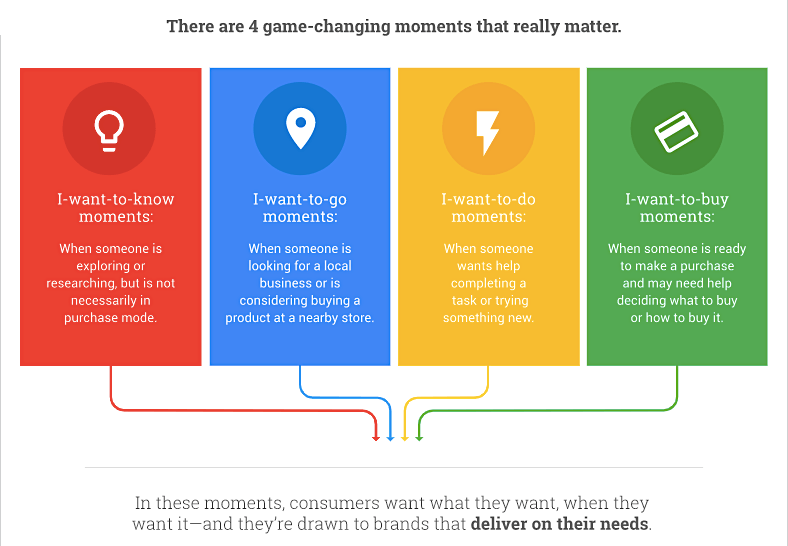
To capitalise on micro-moments in 2021, you must be there where consumers are looking for information at the time – or, as Google puts it, be there, be useful, be speedy.
Because of the growing popularity of micro-moments, marketers must reconsider the linear marketing funnel, which follows a predetermined path: awareness, consideration.
conclusion
The customer journey will be more dynamic and unpredictable in 2021 and beyond, as it will need to adjust to rapid changes in consumer preferences. People have become accustomed to rapid satisfaction in the mobile age. When they think or talk about something, they want to learn more about it, see more of it, and buy more of it with a few mouse clicks.
According to Mention:
“When we act on our needs in the moment, our expectations are high and our patience is low. This makes the quality, relevance and usefulness of marketing more important than ever.”
In order to get the most out of micro-moments in 2021, you need do the following:
● Recognize your customers I want to buy moments.
● Be available in times of need.
● Make it simple for them to make a purchase by providing relevant content.
● Every important moment should be recorded.
11) Voice Search Smart Speakers
Because of the growing popularity of voice search, businesses will need to reconsider their digital marketing strategy in 2021. Consider the following figures: By 2020, voice will account for half of all searches. By 2022, 55% of all American homes will have a smart speaker. Voice-activated speakers are used as part of 72 percent of people’s everyday routines, according to the survey. In 2022, voice shopping is expected to grow to $40 billion, up from $2 billion currently. (Learn digital marketing trends with digital marketing course in Gurgaon)
Between Q1 2018 and Q2 2019, global smart speaker shipments nearly tripled, from 9.36 million to 26.1 million units. Through audio content, voice search plays a vital role in presenting all the necessary information that consumers are looking for. AI is improving, and the amount of mistakes made by voice assistants such as Alexa, Siri, and Google has decreased dramatically.
As Digital Marketing Institute puts it:
“Adopting a voice search strategy isn’t just about remaining relevant – it’s also about creating a unique and optimized customer experience that will foster relationships and build brand loyalty.”
To effectively deliver value-based content to their customers, many firms are already incorporating voice search into their digital marketing strategies:
● Consumers can get bespoke drink recipes from Patrón Tequila.
● Domino’s allows pizza enthusiasts to purchase from the convenience of their own homes, eliminating the need to pick up the phone or even place an order online.
● Users of PayPal can use Siri to send money to friends, family, and companies.
● Nestlé has developed a skill that gives you voice directions while you cook.
● Campbell’s offers a skill that assists hungry customers in selecting and preparing recipes.
And keep in mind that not only will more companies produce audio content in the hopes of gaining brand awareness (so you should, too), but ads are likely on their way next. That means that Alexa will tell you the answer to your question along with a “word from her sponsor.”
For all voice technology, remember to write in a conversational tone, focus on getting featured snippets on Google, and think about keywords that people will speak rather than type.
Optimizing for voice search is a great way to spread brand awareness, but how is that going to convert into sales? Well, in 2021, we’ll see more businesses try to tap into this potential, experimenting with new ideas to use smart speakers as a lucrative channel for driving sales.
Jetson is now a front-runner in the speech commerce area, letting users to make purchases using their voice-enabled devices:
The important thing for businesses to understand is that voice search isn’t just another way to force messaging and sales. Instead, marketers must create a distinct approach to consumer contact, and this channel should be part of a larger, more integrated brand experience
12) Social Media Stories
The concept of My Story was first launched by Snapchat, followed by Instagram and Facebook stories, and finally YouTubes own storey format: Reels. Because these types of tales are only available for a limited time, this is a fantastic opportunity for marketers to capitalise on FOMO (fear of missing out).
The following are some of the advantages of using social media stories:
- Increased brand recognition
- Constant interaction with your audience
- Cost-effectiveness
- Increasing the number of visitors to your website
- Possibility of reaching out to younger audiences
13) Browser Push Notifications
Last year, 85 percent of online shops used push notifications, which is on the rise. Take a look at the following figures:
● When compared to a newsletter, online push alerts attract at least twice as many subscribers.
● Only 10% of the top email marketers can equal the performance of web push in terms of newsletter sign-ups.
● The average time it takes for a receiver to open a newsletter is 6.4 hours. The recipient of a web push message will view the message right away.
The GDPR (General Data Protection Regulations) updates and stricter filters have harmed the effectiveness of email marketing. Furthermore, when it comes to engaging brands, the younger generation prefers other modes of communication and prefers to deal with fewer touchpoints.
Browser push notifications will be used by more brands in 2021 as part of their effort to engage users across multiple channels – and they are becoming more sophisticated and personalised. Using personalised push notifications, on the other hand, increases conversions:
● The open rate for segmented push messaging is 7%, compared to 3% for generic, broadcast messages (a 2x improvement)
● A segmented push notification converts 54 percent of users, compared to only 15 percent for broadcast messages (a 3x improvement)
Notifications triggered by behaviour are being used to re-engage people who have expressed interest but have not converted, as well as to recover revenue from abandoned shopping carts:

Notifications can even include images and CTAs to maximize conversion rates from such efforts.
14) Content Marketing Continues to Dominate SEO
Google made significant changes to its search algorithm in November 2019. The updates included the new BERT system, which is intended to help Google understand the natural language that people use in their search queries.
According to Google’s John Mueller, it is more important to ensure a site has fast speeds, useful links, and well-written content rather than chasing the latest SEO trends. In fact, 88 percent of B2B content marketers agree that creating content helps their audience see their organisation as a credible and trusted resource. Content Marketing Institute statistics:
● Content marketing costs 62% less than outbound marketing and generates 3x the number of leads.
● Compared to paid search, content marketing has lower upfront costs and greater long-term benefits.
● Ad blockers are now used by 615 million devices, which means that your ads are not being seen by as many people.
● Small businesses that have blogs generate 126 percent more leads than those that do not have blogs.
● Conversion rates for content marketing are six times higher than for other methods. With Google continuing to value well-researched, regularly updated articles, many leading businesses will continue to invest heavily in content marketing.
15) SEO A/B Split Testing
Modern marketing is all about experimentation and analysis. You can isolate the variables in your campaign and easily identify which versions are driving the results you require by using SEO A/B split-testing. This type of testing provides marketers with a systematic approach to making effective changes to their content.
Platforms like ClickFlow recommend pages with untapped SEO potential — a high impression count but a low click-through rate (CTR) — that you can then improve to boost traffic, leads, and, of course, conversions.
ClickFlow allows you to set a target CTR value, after which it serves up pages along with a keyword report that lists the keywords for which your page is currently ranking. Even better, it suggests valuable new keywords that you should target in order to increase traffic. Changes to the title, meta description, title tag, and body content are made within the app and are automatically reflected on your site.
Run the experiment for at least 15 days, and ClickFlow will show you how many more clicks you’re getting — as well as how much more revenue you’re gaining as a result of the improvements.
SEO A/B testing extracts the most SEO juice from your site and provides insight into the variables that make a difference. Even a small budget can deliver a high ROI with this strategy and the right tools.
16) Social Commerce Shoppable Posts
Customers are less likely to abandon a purchase if they have to switch apps or sign in to an unknown store, according to e-commerce brands. You’ve probably heard that Instagram is hiding likes, and with all the uproar, you’d think the photo-sharing app was in decline. Consider it again. Social media is an essential component of digital marketing and visual platforms like Instagram are gold for marketers. Even better, visual commerce is gaining traction as more consumers are willing to purchase products based on ads they see in their feeds.
With e-commerce and social media both growing at breakneck speeds, it’s no surprise that
brands are combining the two to maximise sales opportunities. Instagram Checkout, which allows users to complete their purchases from within Instagram, was introduced in March of last year.
17) Interactive Content
Speaking of instant access, we come to one of the most rapidly growing digital marketing
trends in recent years: interactive content. In 2021, we’ll see a shift away from traditional text-based content and toward dynamic, engaging content that provides users with an immersive experience. Consider the following:
● Polls and quizzes
● Calculators that are embedded
● 360-degree videos with augmented reality ads
If you need more convincing, consider this: 91% of buyers are actively looking for more interactive content. People like it not only because it’s new and different, but also because it makes them feel more connected to brands and involved in the purchasing process.
Interactive content is more engaging, memorable, and likely to produce the results your company requires.
18) Omnichannel Marketing
Omnichannel marketing was one of the year’s buzzwords. While the phrase may now seem a little tired, the strategy is as ripe and relevant in 2021 as it has ever been.
The process of marketing across multiple platforms (such as social media, apps, email, and blogs) in order to connect with prospects at more touchpoints is known as omnichannel marketing. When omnichannel marketing is done correctly, you can provide a better user experience and a consistent brand message that motivates people to take action.
To remain competitive, brands must present a unified, consistent voice and message across all available mediums, including physical storefronts, social media channels, online, in catalogues, and anywhere else you can think of. For the best results, all channels should be linked in a unified strategy.
According to statistics, brands that use three or more channels in an automation workflow
can achieve excellent results:
● Engagement rate: 18.96% on omnichannel vs. 5.42% on single-channel
● Omnichannel purchase frequency is 250 percent higher than single-channel purchase frequency.
● Omnichannel orders have a 13 percent higher average order value than single- channel orders.
● Omnichannel customer retention rates are 90 percent higher than single-channel customer retention rates.
With ever-more sophisticated SaaS companies providing tools to manage multiple channels more efficiently, managing an omnichannel strategy is becoming easier, though it can be difficult.
Users expect personalization and the ability to browse a physical store, view products on social media, and buy online. And if you don’t meet their expectations, someone else will.
This is another area where AI and big data are assisting brands in better understanding consumer behaviour and personalising at an individual level at scale. Understanding your ideal customer’s purchasing journey is critical to implementing an effective omnichannel strategy.
19) Augmented Reality (AR) Immersive Technologies
According to Gartner, by 2022, 70 percent of enterprises will be experimenting with immersive technologies, with 25 percent having deployed to production. While virtual reality (VR) makes a lot of noise and gets everyone excited with grand sci-fi ideas, augmented reality (AR) is much more marketable. According to experts, AR will continue to outpace VR in terms of market share:
This technology is increasingly being used by brands to improve the consumer experience and increase sales. ModiFace, which was recently acquired by LOreal, creates augmented reality applications for brands. Sephora Virtual Artist, an impressive example of ModiFace’s technology, allows you to see how different colours of various types of make-up will look on your face without having to physically apply it in a store.
And IKEA has their own augmented reality app called IKEA Place, which allows you to take a picture of a room in your home with your smartphone camera (currently only iOS 11.0.1) in order to & test drive IKEA’s furniture in it. You can move the furniture around to see how it looks from various angles:
20) Predictive Augmented Analytics
Predictive analytics is the practice of identifying patterns in data and attempting to predict the future using data mining, predictive modelling, and machine learning. It is becoming more sophisticated and widespread in a variety of industries.
We will see a lot more of this in terms of digital marketing trends, as it is used in advanced lead scoring, segmentation, and individual personalization, which helps marketers reduce churn and improve customer loyalty.
Amazon Assistant is one such example, a Chrome extension from the retail giant that allows users to allow Amazon product recommendations to extend beyond the website to make personalised offers while they are browsing elsewhere on the web.
Augmented Analytics, on the other hand, automates data preparation and data sharing through the use of machine learning and Natural Language Processing (NLP).
According to Bonnie D. Graham, host of the Game-Changers Business podcast:
“Where predictive analytics uses machine learning to predict what will happen, augmented analytics uses machine intelligence to boost human intelligence with the why, so we can work faster and smarter on ever-larger datasets.”
21) Growth of Geo-Fencing
While the concept of marketing to people based on their location is not new, we do anticipate an increase in the use of geo-fencing – this market is expected to reach $2.4 billion by 2023 – in tandem with the rise of mobile use:
Geo-fencing enables real-time targeting based on a user’s geographic location. When a user enters or leaves a target area, such as within a mile of a restaurant, they receive a push notification, text message, or another form of marketing communication. According to research, 54 percent of people who open a push notification convert from segmented push messages, compared to only 15 percent for broadcast messages.
Furthermore, 52 percent of users enable push messaging in their apps. 76, an American gas company, used Waze to mark their gas stations across California on a map. As drivers approached, a logo would appear on their map, directing them to a gas station and offering them entry into a competition if they filled up. Their Tank 5 campaign resulted in a 6.5 percent increase in fuel station navigation.
22) Progressive Web Apps (PWAs)
Progressive Web Apps are essentially websites that function similarly to mobile apps. They provide the functionality of a native mobile app – fast load times, push notifications, working offline, leveraging device hardware, and so on – without being limited to a single platform (which in reality means Android or iOS). This enables development teams to create web apps that function similarly to mobile apps
for any device.
The number of smartphone users is expected to reach 2.87 billion by 2020. With total page views on mobile increasing by nearly 50% year over year globally, mobile is more important than ever in your digital strategy.
23) User-Generated Content (UGC)
User-generated content (UGC) is a valuable resource for marketers looking to reach the Millennial and Generation Z markets. You can encourage your audience to share unique content by providing an incentive, such as a discount, or by collaborating with them for a good cause.
Aerie, a women’s clothing company, swore off retouching photos of models in bathing suits. Aerie now donates $1 to the National Eating Disorders Association (NEDA) for every Instagram user who posts an unedited photo of themselves in a bathing suit (using the hashtag #AerieReal, of course). As more people become aware of your brand’s products and services, this simple UGC strategy can quickly boost brand engagement and conversion rates.
People trust their peers far more than they trust corporations. In fact, according to one survey, 90 percent of shoppers said UGC influenced their purchasing decision more than any other form of advertising, with a whopping 97 percent of 18-29 year olds saying it had a extreme influence.
UGC can be as simple as blog comments and testimonials, or it can take the form of user- created blog posts, images, and videos. GoPro’s entire YouTube channel is dedicated to user-generated content (UGC), displaying high-quality videos created by its customers using its rugged, portable cameras. Currently, the channel has 8 million subscribers. GoPro recently held a user-generated content (UGC) contest with the hashtag #MillionDollarChallenge in which their customers created and shared videos – and 25,000 people participated!
24) Blockchain Technology
As defined by Blockgeeks:
“A blockchain is, in the simplest of terms, a time-stamped series of immutable data records that is managed by a cluster of computers not owned by any single entity. Each of these blocks of data (i.e. block) is secured and bound to each other using cryptographic principles (i.e. chain).”
Blockchain’s applications extend far beyond the financial world; this technology is also making waves in the digital marketing world. Blockchain eliminates the need for a digital marketing intermediary, fosters trust through transparency, promotes public accountability, and provides benefits for branding.
However, we will see the following blockchain trends in 2021 and beyond:
● Keeping Track of Media Purchases Managing Social Impressions
● Authenticating Online Personas
● Increase Transparency
● Personal Data Protection, Pinpoint Targeting, Authentication, and Provenance.
25) Quantum Computing
Quantum computing is a new technology that is based on a quantum physics theory that states that subatomic particles can exist in more than one state at the same time.
As per ITSPmagazine:
“Traditional computers store data in bits, which can exist in one of two states: one or zero. Quantum computers, however, use a new unit of measurement, a single atom known as a qubit (literally ‘quantum bit’), which greatly increases the computational power of a system.”
Consider a large library as another way to visualise quantum computing:
“While a classic computer would read every book in a library in a linear fashion, a quantum computer would read all the books simultaneously. Quantum computers are able to theoretically work on millions of computations at once.”
So, how can marketers benefit from quantum computing? Here’s what we can anticipate:
● Enhanced mobile data coverage (a boon for mobile marketers)
● Artificial intelligence is becoming more human-like (Google AI is developing quantum
algorithms that will drastically improve machine learning)
● Ad relevance has increased (quantum annealing can help advertisements reach a
wider range of people at a better cost).
26) Big Data and Deep Learning
The global big data industry will continue to expand exponentially in 2021, which is great news for marketers – if you know how to harness the power of big data. A large part of ask is determined by the tools you use, which is something that many businesses find difficult.
According to Forbes, 78 percent of organisations have or are developing a customer data platform to help manage, analyse, and leverage their data. It’s no surprise that data experts are at the top of the priority list for many businesses, with 41 percent of business owners stating that it’s their most desired skill to hire.
With the benefits of big data comes the requirement for businesses to better leverage this data in order to significantly simplify tasks that could previously only be completed by data scientists. More importantly, this continued democratisation will result in new use cases that are closer to the needs of business users and will enable faster time-to-market for enterprise AI applications."
One caveat is that as big data becomes more powerful, the demands on how businesses should manage consumer data become more precarious. The GDPR amendments laid the groundwork for a global data privacy revolution, with California set to implement the California Consumer Privacy Act (CCPA) on January 1, 2020.
As a result, big data is a two-edged sword that many digital marketers will find difficult to resist in the near future.
27) Automation (AI)
According to Gartner, 30 percent of businesses will use artificial intelligence (AI) in their sales processes by 2021. To be fair, we should expect more, especially given the incredible benefits of AI and automation in sales and marketing. You can, for example, use artificial intelligence and automation to:
● Increase Customer Loyalty and Retention
● Predict Your Customer’s Behavior Using Propensity AI-Powered Chatbots Improve User Experience Through Modeling and Predictive Analytics
● Make Use of Audience Insights to Boost Search Ads
● Scale Up Your Content Marketing with AI-Generated Content Provide Every User with a Highly Personalized Website Experience
● Optimize Your Website for Voice Search Queries
● Determine Hot Leads
● Lower Cart Abandonment
● Customers Can Be Reached Through Various Channels
● Increase Customer Lifetime Value (CLV)
● Customers can be upsold and cross-sold to.
● Improve Blogger Outreach Automatically Suggest Leads from Thank You Pages.
But don’t just take our word for it. As Neil Patel says:
“Marketing will become a more even playing field and you’ll have no choice but to use automation.”
28) Google Ads Smart Bidding
With social media competition suffocating organic reach, paid advertising will become a more trusted force in 2021. And, when you consider the Google Ads Smart Bidding feature, you’d be a fool not to give it a shot. Google explains that with Smart Bidding:
“Machine learning algorithms train on data at a vast scale to help you make more accurate predictions across your account about how different bid amounts might impact conversions or conversion value.”
With intense competition on social media slowly suffocating organic reach, paid advertising will become a more trusted force in 2021. And, with Google Ads Smart Bidding feature, you’d be a fool not to give it a shot.
Smart bidding allows you to use a variety of signals to optimise your bids, including:
● The physical location of the device
● Intention to locate
● Day of the week and time of day
● List of remarketing
● Features of advertisements
● Browser Operating system Interface language.
29) SERP Position Zero
Voice search has been making waves over the past few years, changing the way search engine optimization works. The rise of the highlighted snippet, which appears at the coveted position zero of Google’s search engine results pages, is particularly noteworthy.
By 2021, at least 30% of all Internet searches will be completed without the use of a screen, and since 40.7 percent of all voice search answers come from a featured snippet, you may be the one to land that coveted slot if your marketing is powerful enough. This is the holy grail of modern-day SEO, as it directly answers user search queries without the need for the user to click a link. It’s also known as rank zero snippet or position zero.VSEO (voice search engine optimization) can provide you with a significant competitive edge (albeit this is only true for one brand…).
This trend is accelerating, with & zero-click search results now appearing in 62.5 percent of mobile searches and 34.4 percent of desktop searches. These are the most prevalent words in featured snippet search inquiries, according to Ahrefs.
30) Branding
We live in an era when consumers have an abundance of options. It’s rare that you work in a vacuum, no matter what industry you’re in. When people trust a brand, 66% say they feel linked to it, and the only way to earn their trust is to build a strong brand. Because of Google’s E.A.T. ranking factor :
● Expertise: The page should feature high-quality content created by a professional writer.
● The site should have some authority on the issue.
● Trustworthiness: other authoritative connections pointing to the site from reputable
sources are required.
In other words, Google wants to do more than just rank good material; they want the most accurate, up-to-date, well-researched (i.e. authoritative) content on any particular topic, preferably authored by actual experts in the field.
31) Better Analytics
Modern marketing and metrics are inextricably linked, so if you don’t invest in improved analytics, you’ll struggle to achieve the desired outcomes. The issue is that the consumer journey has become more complicated. Before making a purchase, the average consumer engages with a brand on up to six touchpoints.
With so many channels to handle and so many ways to sell your products and services, analytics tracking is quickly becoming a mammoth task. As a result, many businesses are looking for a comprehensive business intelligence solution or analytics dashboard, such as Amplitude, that goes beyond the basics of Google Analytics.
Moving towards business intelligence, which is defined as technology, applications, and procedures for the gathering, integration, analysis, and presentation of business information is another way this trend will manifest. The goal of Business Intelligence is to help people make better business decisions. Google Data Studio (Google’s reporting tool for hardcore users who want to go beyond the data and dashboards of Google Analytics), Metabase, and Tableau are just a few of the premium and free business intelligence choices available.
32) 5G Technology
The emergence of 5G technology, or the fifth generation of mobile technology, is perhaps one of
the most crucial digital marketing trends of 2021 in a world obsessed with mobility. This update ushers in a new era of digital communications, with ramifications that will be seen in almost every business.
Intel’s Asha Keddy says:
“5G will enable a fully-mobile and connected society — unleashing human and technological possibility, and fuelling business and financial opportunity.”
T-Mobile touts the advantages of 5G speed for the budding augmented reality business, claiming that it might be crucial in the development of a virtual heads-up display. 5G Internet speeds can let bikers see danger from all sides, as shown in the image below:
By 2025, the European Union will have implemented an ambitious 5G action plan that includes continuous 5G coverage for important roads and railways. Furthermore, the technology is predicted to enable a remarkable 100-fold rise in the number of connected devices.
33) Privacy Marketing
According to Forbes, British Airways was fined £183 million for a data breach, while Marriott was fined £99 million for failing to protect the personal data of 339 million customers.
When it takes effect in 2021, the aforementioned CCPA (California Consumer Privacy Act) in trend #26 will be the most draconian state privacy law passed in the United States. Despite criticism from Silicon Valley heavyweights such as Facebook, the world’s fifth-largest economy is pressing ahead with its new consumer privacy laws. Consumers trust can be earned in a variety of ways, including:
● Investigating and comprehending our target market (s)
● Creating a meaningful message to captivate a target audience
● Identifying the best channel for interacting with that specific audience
● Through attentive involvement, you can develop an intimate friendship.
34) Website Security
We must mention website security in the same sentence as privacy. When a visitor comes to your site for the first time, they will form an opinion about its security in a matter of seconds. They won’t stay if they don’t feel protected, which leads to higher bounce rates.
A high bounce rate is bad news for your business over time, since it will cause you to drop in the SERPs when Google recognises that people don’t want to stay on your site for long. Website security will no longer be an option in 2021. Google declared in August 2014 that HTTPS is a ranking indication and that any site that does not have an HTTPS (the stands for secure) certificate is flagged as unsafe.
35) IoT Advertising
The Internet of Things (IoT), which includes anything from smart automobiles to household appliances to wearable technology is becoming increasingly connected.
According to QuanticMind:
“These days, it’s expected that connected devices and technologies will unobtrusively, and sometimes stealthily, collect data on our vital functions, what we do, where we go, what we share, what we believe, what we buy, who we know, how we move and even what we eat. Of course, this means that businesses and marketers want to use (or are already using) this information for their own marketing and advertising. Consider the following scenario:
● A Blue Label bottle from Johnnie Walker contains electronic sensors that can detect whether the bottle has been opened and where it is in the supply chain.
● Another beverage business, Malibu, takes it a step further by using their connected bottles as a digital touchpoint for exclusive content.
36) Long-Form Content
Shorter postings will not get you anywhere in 2021, either with Google or with your readership. The most popular posts are those that are at least 3,000 words lengthy and provide readers with an in-depth look at a topic. Long-form content allows content writers to establish themselves as subject experts and provides them with more opportunities to target keywords.
According to a study published by Search Engine Journal, long-form content receives 77 percent more backlinks than short pieces, which is important for boosting organic
traffic:
The following are some of the advantages of long-form or pillar content:
- Spending more time on your site’s pages. Users will spend more time-consuming the material if there is more of it available.
● The bounce rate has decreased. Users will not return to Google to discover another source if they find what they’re looking for on your page.
● There are a lot of backlinks and social media shares. Pillar pages are widely and frequently shared, particularly among influencers in a given sector.
● Increases traffic to your blog or website over time. Because pillar material is evergreen, its value does not dwindle with time.
● A high Google position. The high word count, shares, and backlinks will all help you stand out on SERP.
37) Semantic Keyword Research
When it comes to developing long-form material, keep the following in mind: You should write for people rather than for Google.
It’s fine to pound out a 5,000-word post every other day, but if you don’t consider user intent, you won’t get the results you want. This is the main purpose that a person has when they write or voice a search query, also known as search intent or keyword intent. It could be to look for a product, information, or the location of a store.
Consider how Google evaluates your material. The search engine evaluates the content of a query and delves it down to understand the user’s search intent, rather than only evaluating keywords in a search box. In the example below, if a person was looking for a lost cat, Google would utilise semantic analysis to add terms such as control centres are examples of related notions.
● Associated fields
● Other options for assisting you
38) Structured Data SEO
There will no doubt be the now-annual accusations that SEO is dead among all the digital marketing trends you’ll hear about soon (if not already). Ignore these assertions. SEO isn’t dead — it’s just taking on new forms. Structured data will start to appear more frequently in search engine results in 2021.
Any data that is organised in a way that makes it easy for search engines to crawl and categorise is classified as structured data. This can be done via backend code or by neatly organising information in tables with labelled columns and rows. Another advantage of structured data is the ability to provide Rich Snippet results, which include photos, review statistics, and pricing. Rich snippets, also known as rich cards are great for getting people to click, especially on mobile.
39) Alternate Search Engines
According to StatCounter, Google accounts for almost 92 percent of all search engine traffic, dwarfing its closest competitors, Yahoo and Bing: The world’s most popular search engine is a complex innovation juggernaut, perfectly adjusted to give the most relevant, up-to-date, and thorough results for any user
Search query.
It’s difficult to imagine Google collapsing anytime soon, making it appear impossible for any rival search engine to give it a run for its money. Another the way the sales funnel is being transformed is from the funnel to engine, in which the brand no longer dictates the buyer’s journey but rather synergistically interacts with the customer.
The basic lesson is that we can and should anticipate technology to continue to evolve, thus marketers must create funnels that can adapt to changes in the digital landscape on a regular basis.
41) Social Media Marketing
In 2021, we’ll see businesses relying more on video and interactive content on social media to attract attention, but they’ll need to back it up by being honest on their platforms and working hard to cultivate a community of engaged, dedicated followers.
Following the removal of likes from Instagram, this growth is unlikely to slow. Here are some social media trends to keep an eye on, according to Social Media Today.
● Facebook Pay: This payment service, which debuted in the United States in November 2019, would enable on-platform payments, in-stream, making it easier for customers to buy things on Facebook, Instagram, WhatsApp, and Messenger
● Facebook Watch is the social media giant’s own video-on-demand service.
● Oculus: Virtual reality technology that makes social media more engaging, dubbed the next generation of social" by Facebook.
● Facebook’s integration of the messaging functions of Messenger, Instagram, and WhatsApp is known as cross-stream messaging.
● Instagram’s long-form video platform, IGTV, isn’t new, but it’ll likely get a boost in 2021.
● Twitter’s mDAU is a new monthly and daily active user measure called monetizable daily active users, which is part of the company’s effort to rid the platform of bots.
● Narrowcast tweets: An option that would limit the audience and usage of your tweets, including the ability to remove the retweet function from selected tweets, and to restrict your tweet reach to only selected hashtag discussions and/or specific friends…[and allow you] to target your tweets to specific
audiences
● Tweet streaming is a new live-streaming function available on Twitter.
● Groups on LinkedIn are similar to Facebook groups. Although it isn’t technically a new function, LinkedIn may give it a shot.
42) Neuromarketing
Last but not least, we’ll dangle our toes in one of 2021’s most exciting digital marketing trends: neuromarketing. While this may sound like something out of a science fiction film, the reality is that this technology is rapidly evolving and could soon become a legitimate marketing tool.
Neuromarketing, for the uninitiated, is a method that examines measurements of a person brain activity and nervous system to discover which types of content they find engaging.
It entails creating marketing materials (such as your website, adverts, email campaigns, and content) that elicit specific neurological processes that elicit emotions or responses related to purchasing. You may utilise this data to improve the success of your marketing by optimising your content and adjusting your methods.
According to Forbes, the company plans to cooperate with political campaigns in the future. Regardless of whether this occurs or not, neuromarketing will undoubtedly have a significant impact on the future of marketing.
